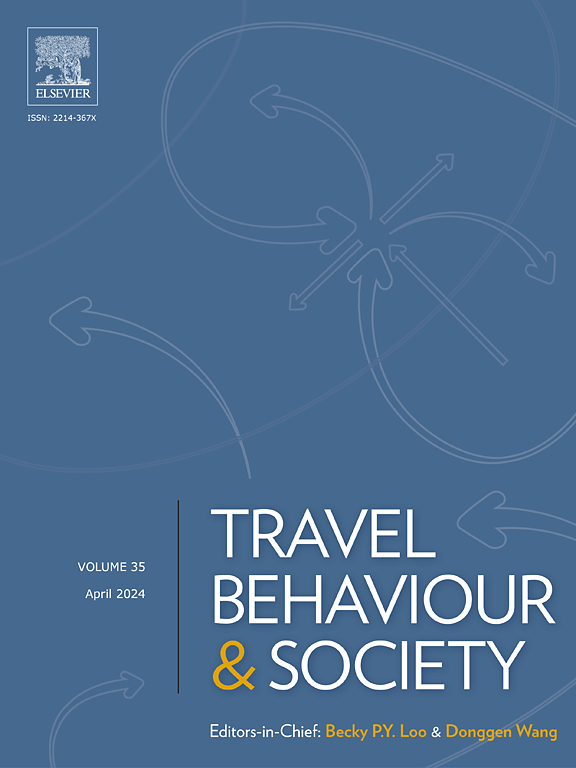从两种自动驾驶汽车事故记录来源了解影响自动驾驶汽车碰撞严重性的新因素
IF 5.1
2区 工程技术
Q1 TRANSPORTATION
引用次数: 0
摘要
卓越的安全性是推广自动驾驶汽车(AV)技术的主要旗帜价值,但很难负责任地宣称这一点。无论自动驾驶汽车能否减轻或消除人为失误,其降低碰撞和伤害风险的潜力都会因技术限制而黯然失色。本研究旨在通过分析 2015 年至 2022 年期间美国真实世界的自动驾驶汽车碰撞数据,找出影响碰撞严重程度的关键因素。我们整合了加州车管局和美国国家公路交通安全管理局的两个开放数据源。使用碰撞严重程度估算了包含交互效应的混合多叉对数模型,解决了观察到的和未观察到的异质性问题。我们的结果表明,高级驾驶辅助系统(ADAS)的使用与发生轻伤碰撞事故的可能性较高有关,而自动驾驶系统(ADS)的使用则显示出相反的效果。此外,我们还发现各种环境和道路因素,包括照明条件、天气、道路类型和路面状况,都会对视听碰撞事故的严重程度产生重大影响。例如,在日光条件下发生轻伤碰撞事故的可能性较低。另一方面,在不利的天气条件下(阴天、雾天、雨天或下雪天)、在高速公路上以及在不干燥的路面上驾驶时,发生严重受伤车祸的可能性会增加。此外,还发现了几种重要的交互效应。首先,追尾碰撞类型会降低 ADS 对轻伤碰撞可能性的缓解作用。其次,当自动驾驶汽车与高速公路上的重型卡车发生交互作用时,轻伤碰撞的可能性会增加。第三,在城市道路上,当自动驾驶汽车与易受伤害的道路使用者(VRU)发生碰撞时,严重受伤的可能性会增加。总之,这项研究有望为政策制定者和自动驾驶汽车制造商提供有关自动驾驶汽车安全的宝贵见解,并强调解决已确定的因素将有助于改进自动驾驶汽车的设计和控制算法。本文章由计算机程序翻译,如有差异,请以英文原文为准。
New insights into factors affecting the severity of autonomous vehicle crashes from two sources of AV incident records
Superior safety is the main banner value of promoting autonomous vehicle (AV) technology, but it is difficult to responsibly claim it. The potential for AVs to reduce crash and injury risks would be overshadowed by technological limitations, regardless of their ability to mitigate or eliminate human error. This study aims to identify the key factors affecting crash severity by analyzing real-world AV crash data from the U.S. between 2015 and 2022. We integrated two open data sources from the California DMV and NHTSA. Mixed multinomial logit models incorporating the interaction effects were estimated using the crash severity level, addressing the observed and unobserved heterogeneities. Our results show that Advanced Driver Assistance System (ADAS) engagement is associated with a higher likelihood of slight injury crashes, whereas Automated Driving System (ADS) engagements show the opposite effect. In addition, we found that various environmental and road factors, including lighting conditions, weather, road type, and road surface conditions, significantly affect the severity of AV crashes. For instance, daylight conditions contribute to a lower likelihood of slight-injury crashes. On the other hand, driving under unfavorable weather conditions (cloudy, foggy, rainy, or snowy), on the highway, and on non-dry road surfaces are associated with an increase in the likelihood of severe injury crashes. Furthermore, several significant interaction effects were revealed. First, the mitigating effect of ADS engagement on the likelihood of slight injury crashes is reduced by the rear-end collision type. Second, the likelihood of slight injury crashes increases when AV interacts with heavy trucks on highways. Third, the likelihood of severe injuries increases when AVs collide with Vulnerable Road Users (VRUs) on urban streets. Overall, this research is expected to provide policymakers and AV manufacturers with valuable insights into AV safety, stressing that addressing the identified factors will lead to improved AV design and control algorithms.
求助全文
通过发布文献求助,成功后即可免费获取论文全文。
去求助
来源期刊

Travel Behaviour and Society
TRANSPORTATION-
CiteScore
9.80
自引率
7.70%
发文量
109
期刊介绍:
Travel Behaviour and Society is an interdisciplinary journal publishing high-quality original papers which report leading edge research in theories, methodologies and applications concerning transportation issues and challenges which involve the social and spatial dimensions. In particular, it provides a discussion forum for major research in travel behaviour, transportation infrastructure, transportation and environmental issues, mobility and social sustainability, transportation geographic information systems (TGIS), transportation and quality of life, transportation data collection and analysis, etc.
 求助内容:
求助内容: 应助结果提醒方式:
应助结果提醒方式:


